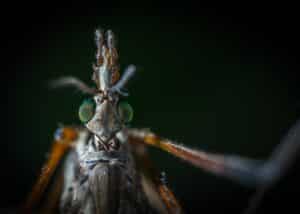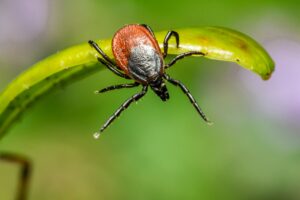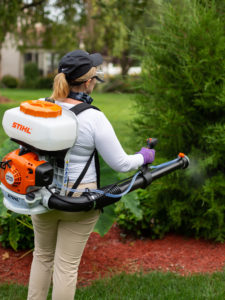New research will help predict tiger mosquito spring hatch
As a pest control professional, fighting nuisance mosquitoes is a key to keeping your customers happy.
In many parts of the U.S. the Aedes albopictus is one of the most aggressive biters that torment people in their backyards.
A team of researchers from Rutgers and LSU (Kristen B. Healy, Emily Dugas and Dina M. Fonseca), studied the development of a temperature model to help mosquito fighting professionals anticipate the first big hatch off of the year for these terrible pests.
See the article here: Published to the Journal of the American Mosquito Control Association, 34(4):249-257, 2019
Using average weekly temperatures in each population, the average hatch-off is week 6 in Louisiana (mid to late February), and week 14 (mid to late April) in New Jersey.
Thus, armed with this knowledge we can better prepare to help our customers with professional mosquito control!
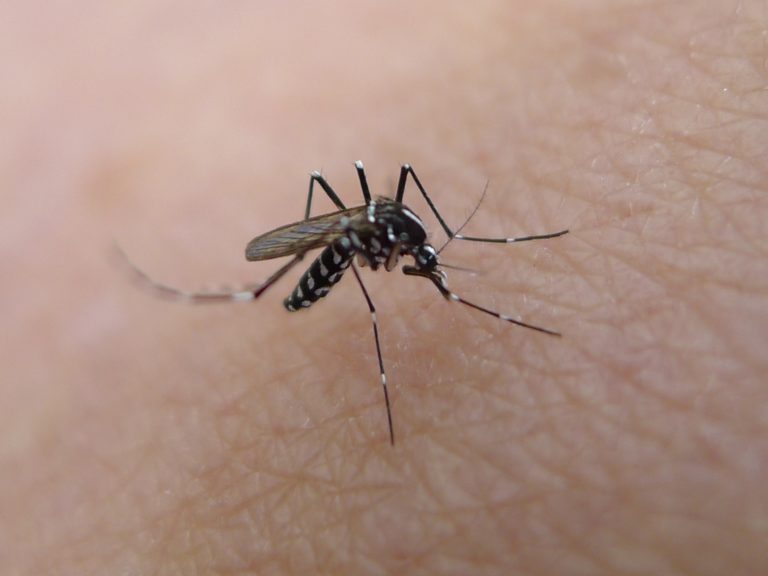
The nuisance mosquito
Aedes albopictus, the Asian tiger mosquito, is a nuisance mosquito serving as a potential carrier of various arthropod-borne viruses (Zika, dengue, chikunguya and others) in many parts of the world.
Especially areas where it has established under ideal temperature, density, and nutrient scenarios. It can outcompete and even eradicate other Aedes species with similar breeding habits.
The global presence of these species have been in relation to the presence of different levels of temperature.
Since it has clear reactivity to temperature, temperature-based models will allow for prediction and proactive approaches in controlling Aedes albopictus. This would be done by targeting larvae early in the season when they are more vulnerable.
What does this Degree-Day Model do?
This team at LSU and Rutgers, worked together to produce and develop this DD model. They predicted the egg hatching of Aedes albopictus.
Which will begin hatching in early spring. Thus, this model will help to inform public health public health professionals with the goal of early-season mosquito control.
Additionally, this model will help both local pest control companies and public health mosquito control agencies to predict when homeowners will experience the first wave of attack from Aedes albopictus.
Pest control companies need to circle these weeks in red on their calendars!
Findings from this new research
A few things researchers had to look at to create this DD model:
- Mosquitoes and rearing
- Effects of temperature on development rate and wing length
- Effects of diet on development rate and wing length
The results of this project were recorded on a daily basis and analyzed to predict hatching. They used different temperatures and diets.
All temperature-dependent development rates were compared between sexes and populations. Neither population nor sex was statistically different.
Additionally, researchers found the highest mortality in both the lab and field populations occurred at the lowest temperature examined in this study, 15°C, while the highest survival in both populations occurred at 27°C.
While there were no significant trends in relation to temperature and wing length, it was found that the mosquitoes had a varied wing length depending upon nutrition level.
Below is a chart from the study using the Degree-Day Model.
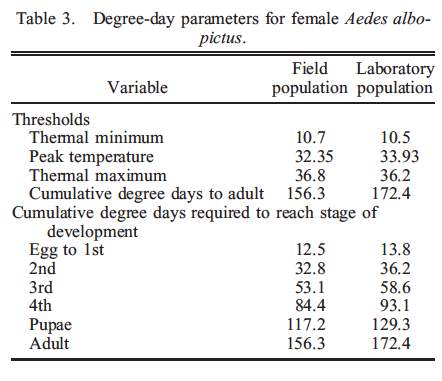
Conclusion
Although more research needs to be conducted, this study found a base-line for future researchers! This DD model will be a big help to mosquito population control. It may prevent the peak of mosquito populations in marshy, humid environments and other prominent mosquito-ridden areas.
According to this model, the start of egg hatching in Louisiana will be the second week of February (February 8, 2021) and the first full week of April (April 5, 2021) in New Jersey.
Another reminder of why professional mosquito control is essential to customers nation-wide!

